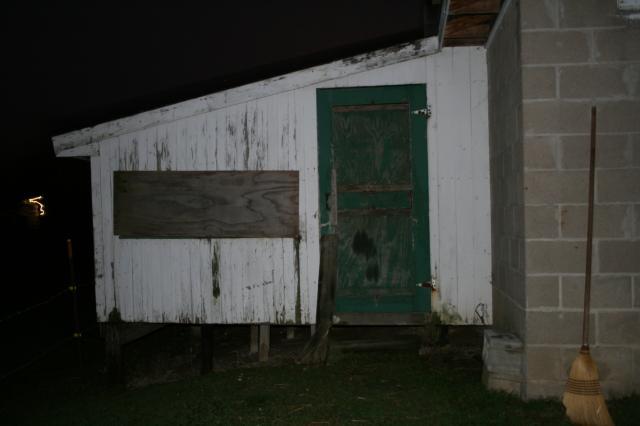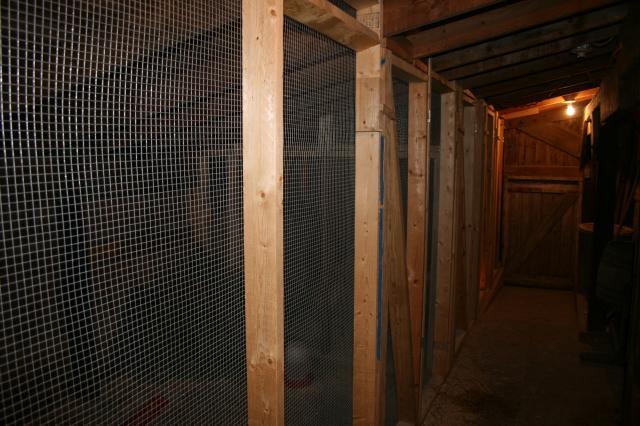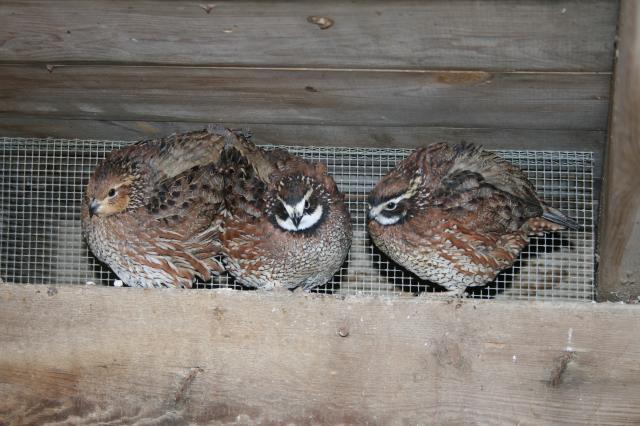If you are seeing light between boards in a lot of places, that might be wise to do something about given that you live in Michigan (if you lived in, like, Tennessee I'd say who cares
). The ideal thing would be to staple in some vapor-barrier plastic, wrapping it *around* wall studs so it is one continuous piece adn taping over your staples, then insulate the wall with a peckproof layer (thin plywood or recycled panelling or something) to keep the chickens from eating the insulation. If you can't do that, at least consider stapling some vapor-barrier plastic in there, although it is possible that bored chickens may start doin' things to it where they can reach it so you'd want to keep an eye on it in case parts need to be covered over with something peckproof.
By "screened windows" do you mean the thing shown in the pic with the quail, a narrow slot (with hole-saw holes thru the siding, I thnk?) that is on top of the low wall, in between rafters? Unless you are in a windy location, they should not be a big problem draft wise. If you had to you could block some off but frankly it sounds like you have a LOT of chickens in there and already have moisture problems and i'd be cautious about shutting up ventilation. Just seeing cobwebs gently move is not a problem per se.
I would suggest investigating more closely how water is getting in there. And make sure whether what you're seeing is *water* or whether it is *frost*... high humidity can cause sometimes quite a lot of frost to form on vent screens.
But you said you have "icicles hanging from the ceiling", too? So either your roof really DOES leak; or they are frost icicles (can be identified because they hang from protruding nails and nowhere else); or water is tracking under from the roof overhang of the building the coops' built against, and from there getting under your roofing and coming in to cause leaks.
If they are frost-sicles (again, look closely, you would see that each icicle is hanging from a protruding nailhead or nailpoint and all (or nearly all) the protruding nails *have* icicles) then the solution is to insulate your ceiling well. Which frankly in Michigan with birds you're concerned about cold with, I would suggest doing ANYhow. And then also increase your ventilation, because if you're getting THAT much frost in such relatively mild temps (yet) it means your humidity is real high and that will cause lotsa problems later on.
If they do not follow the correct pattern for frost-sicles, you need to investigate more closely whether it is the COOP's roofing that leaks, or whether water is tracking in from the eaves of the overhanging building. I know that is hard to do, and may not be easy to fix either, but if you do not fix your leak problem I think you may very well lose a number of birds this winter so it is really important to go the extra mile. (And then, once the roof has been leak-free thru a coupla rains, insulate it)
Are you really keeping those birds inside all the time without sunlight, btw? Could we possibly talk you into some proper windows, at least as a project for next spring? That's a kinda grim way to live a life, even for a chicken.
Pat








